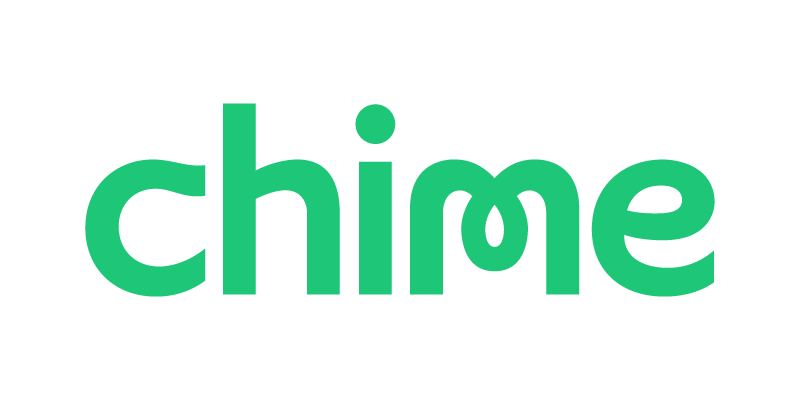Historical CD Rates: Highs, Lows and the Stories Behind Them

Many or all of the products featured here are from our partners who compensate us. This influences which products we write about and where and how the product appears on a page. However, this does not influence our evaluations. Our opinions are our own. Here is a list of our partners and here's how we make money.
If you’re looking for the highest rates for certificates of deposit, knowing some history can provide a useful perspective. What counts as high yields has changed over time.
CDs have been around in some form since the 19th century and they still appeal today. Unlike a regular savings account, a CD has a fixed rate, term and upfront sum.
» Skip ahead to two graphs of historical CD rates
In the early 1980s, CD rates reached highs unimaginable now: double digits. Fast-forward to 2019, when a five-year CD rate was just above 3% annual percentage yield. Before and during the height of the COVID-19 pandemic, the best rates mostly stayed below 1% APY. Now, we’re in a rising-rate environment where the best rates have reached 5% APY for one-year CDs.
But these numbers don’t tell the whole story. Understanding why rates fluctuate can help adjust your expectations when you're looking for the best CD for you.
» Want to see current yields? See the best CD rates for this month

Deposits are FDIC Insured
BMO Alto Certificate of Deposit

5.40%
1 year
Where we are now: 2023
Some of the best CD rates have reached 4% to 5% APY, with the most competitive rates generally on one-year terms. CD rates continue to steadily climb from 2022 into the second half of 2023, thanks to multiple Fed rate increases since March 2022. The most recent increase was on July 26, 2023. When Fed rates rise, banks and credit unions tend to raise their rates on savings and CDs too.
So far this year, the Federal Reserve has raised its rate four times, after seven consecutive increases in 2022. National average CD rates for six-month to five-year terms have climbed above 1%, and some of the best CD rates have reached the 4% to 5% APY range.
CD rate trends
Normally, the longer the CD term, the higher the rate. A higher rate is an incentive to keep funds untouched at a bank longer. But this trend has been upended in the current rate environment. One-year CDs have higher rates on average than three-year and five-year CDs, for national averages and high-yield — or the most competitive — CDs. This phenomenon originates with bonds such as Treasurys and is known as an inverted yield curve.
“Investors expect weaker growth and slower inflation to take hold over the next few years, perhaps even a recession in the near term,” Gus Faucher, chief economist at PNC Financial Services, said in an email. “These expectations for slower and weaker growth over the long run are pushing down yields on longer-term Treasurys, such as 5-year and 10-year notes, and is holding down interest rates on longer-term CDs.”
“Rates for CDs are correlated with rates of Treasurys with similar maturities because they’re substitutes” for investors, Faucher said. “If a bank needs deposits, it can raise rates on CDs relative to Treasurys, and other banks, to attract depositors.”
CD rates: 1980s to 2000s
The highest CD rates in modern history are decades behind us — around the start of the 1980s. A three-month CD in December 1980 earned 18.65%, according to data from the Federal Reserve Bank of St. Louis. But it wasn’t a time of economic prosperity, with two back-to-back recessions, high unemployment and double-digit inflation.
So why were CD rates decades ago astoundingly high by today’s standards?
During the 1970s and early 1980s, "the Fed raised rates then to fight inflation that had gotten out of hand," Faucher says.
Banks followed the Fed’s lead with higher CD rates. But these CDs' actual returns were worth much less than the percentages suggest. The reason? High inflation.
Inflation cuts into the spending power of the dollar, making goods today cost more in the future. If inflation is, say, 15%, and a CD rate is 17%, then it's beating inflation by 2% — and that would be the real return.
» Use our inflation calculator to learn more
Through the '80s and up to today, CD rates have fluctuated in booms and recessions. You could find a 5% CD rate both in the mid-'90s and the mid-2000s, on either side of a short recession in 2001. Then, came the Great Recession from 2007 to 2009, which at the time was the biggest economic downturn since the Great Depression. Recovery in the 2010s didn’t lead to the high CD rates of previous decades.
We had "historically low interest rates in the period after the Great Recession, and then they fell further with the 'Viral Recession,'" Faucher said in an email, citing data by the National Bureau of Economic Research that shows a recession in March and April 2020.

Average CD rates: 2010-2023
The trajectory of CD rates generally mirrors the direction of the Federal Reserve’s federal funds rate. When the Fed raises or lowers its rate, banks and credit unions generally take their cue to do the same for savings accounts and CDs. Typically the Fed lowers its rate to stimulate the economy and raises it to slow down the economy, especially during inflation. Learn more about how Fed rate increases affect CD rates.
During the 2010s, average rates stayed relatively flat until December 2015, when the Federal Reserve raised its federal funds rate for the first time since the Great Recession. The ensuing rising-rate environment didn’t last long, though. The drop in rates started in summer 2019 when the Fed changed its stance on the U.S. economy at the time and lowered the federal funds rate.
In March 2020, the Federal Reserve slashed its benchmark rate to nearly zero, and many CD rates dropped quickly in response. The Fed’s action was an effort to stimulate the economy as it struggled with the initial effects of the coronavirus pandemic.
In March 2022, the Federal Reserve raised its rate for the first time in three years to curb the rising inflation. Both national average and high-yield CD rates rose in response and kept climbing as Fed rate increases continued for the rest of the year.
Here’s a deeper dive into the effects of Fed rate increases for September 2022, November 2022, December 2022 and February 2023.
High-yield CD rates: 2018-2023
But the highs and lows of rates for traditional bank CDs isn’t the full story.
The highest CD rates tend to be at online banks and credit unions. In the 2010s, the rise of online, or internet-based, banks created a new opportunity for savers to lock in CD rates far above national averages. Online banks largely operate without branches and rely on shared ATM networks or none at all, rather than having their own networks. This helps them avoid overhead costs and offer competitive rates.
Credit unions can offer strong rates too, but unlike online banks, nationwide coverage isn’t common. Many restrict membership to certain regions or groups, such as the military.
Note: CDs at brokerages such as Fidelity and Schwab can have even higher rates, but their CDs, known as brokered CDs, work a little differently than regular CDs and aren't included in this analysis.
At the peak for CD rates in 2019, some online banks and credit unions had five-year CD rates that surpassed 3% APY. When the Fed changed its stance on the economy and lowered its rate, high-yield CD rates dropped below 1% and then stayed flat during many months of the pandemic in 2020 and 2021.
But since the summer of 2021, rates have been rising again — and dramatically. The Fed raised its rate multiple times in 2022 and 2023. Subsequently, the best CD rates skyrocketed from 1% in January to above 4% APY in December 2022, and to 5% APY for short-term rates by March 2023. Online banks and credit unions tend to respond more drastically to Fed rate changes than traditional banks.
Choose CDs based on your goals
History provides a helpful snapshot of what counts as high CD rates over time, but the reasons why you would get a CD matter more. Generally, you might take advantage of certificates of deposit to earmark some savings for a big goal within five years, such as buying a car or house. And CDs protect your funds without the volatility of the stock market. (Read more about the pros and cons of CDs.)
CDs tend to have higher rates than savings accounts, and once you lock in a CD’s rate, you earn that until the CD expires. CDs are safe because banks and credit unions offer federal deposit insurance to protect your money in case they go bankrupt. This safety measure has been in place since the aftermath of the Great Depression.
When you compare CD rates today, you won’t find the highest yields of all time. But you can still lock in competitive ones, and that might be enough to help with your goals.
» Learn more about when and why to open a CD
How do CDs work?
Learn more about choosing CDs, understanding CD rates, and opening and closing CDs.
For choosing CDs:
For understanding CD rates:
For opening CDs:
For closing CDs:
See CD rates by term and type
Compare the best rates for various CD terms and types:
See CD rates by bank
Here’s a quick list of CD rates at traditional and online banks and a brokerage:
On a similar note...












